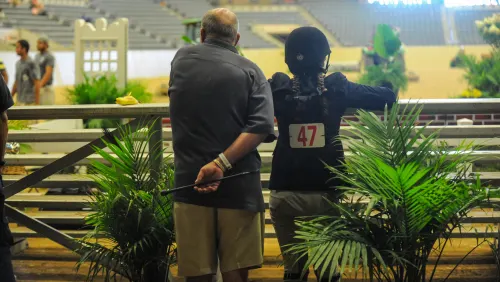As you peruse the pages of this year’s Horse Show Issue, the 59th annual, you’ll see pages and pages of show horses and ponies from throughout the country who’ve earned national, zone and association championships. This issue commemorates their achievements and allows owners, trainers, riders and breeders to pat themselves on the back and to reflect on the past year’s accomplishments.
In this year’s issue, we collected 967 photos and thousands more names to honor, making this our largest Horse Show Issue ever. This number is an indication of the health and popularity of showing horses in the 21st century.
It’s now about 60 years since the horse’s role in the United States truly changed from a servant and business tool to a companion and pleasure animal. With the advent of mechanized machinery and the limited use of the Cavalry in World War II, the horse was relegated to a basically ceremonial role in warfare.
Just after World War II concluded, some horsemen of the day wondered what would happen to the horse in America without the direction of the U.S. military. An article in The Washington Post on Dec. 8, 1946, written by the retired Chief of Cavalry, Gen. John Herr, reminded readers that “the future of the horse in America lies now in other hands than those to which it has been entrusted for generations.”
Civilians, in other words.
ADVERTISEMENT
An editorial in the Dec. 13 issue of the Chronicle was even more pointed, quoting Herr: “But few believe the horse will ever come back as an efficient partner to modern war or peace. If this is so, the horseman devoted to the interests of this finest of all animals is left alone in the sole position of responsibility to improve the breed. For what? Simply sport and pleasure.”
Past horsemen also worried that the children of the future would be drawn into other activities, and the horse would be left in the proverbial dust of those technological advances. “As soon as one lifts one eye over the horizon, there for all to see are countless thousands of children growing up in a world of many varying pleasures, going many different directions. How many of these children will know the horse as their fathers and grandfathers have known him for countless generations back? None,” predicted the same editorial.
So, the horse became our partner in sport and pleasure. And it’s the hands of our parents and grandparents that have molded and directed him to achievements beyond simply transportation and warfare, and it’s in our hands where he lies now.
How have we done? I believe our ancestors would be proud that we’ve kept the horse a significant part of our lives, that we’ve improved and documented many more breeds of horses, and we’ve researched the best ways to care for them and ride and train them. While there are always exceptions, in general, today’s horsemen value their horses just as much, or even more, than did their great-grandparents. Maybe it’s because we don’t take them for granted anymore; owning a horse today isn’t a requirement. Instead, it’s a choice and privilege.
In 1946, there were 180 horse shows registered with the American Horse Shows Association. Today, there are more than 2,700 and some 80,000 individual members of the U.S. Equestrian Federation. Our relationship with the horse will certainly continue to evolve over time, but our ancestors needn’t have worried so much. There’s a bond we share that will always prevail. Millions of people throughout our vast country enjoy horses, and this annual Horse Show Issue is really just a small reflection of that passion.














